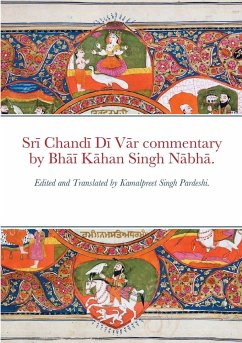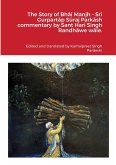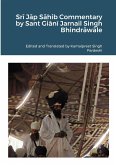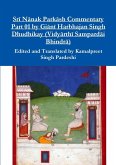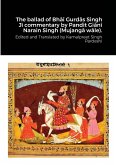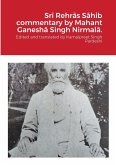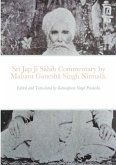The text known as 'Chand¿ D¿ V¿r' is the third composition written by Sr¿ Guru Gobind Singh J¿ on the battles of Chand¿ within the Sr¿ Dasam Granth. The first is 'Chand¿ Charittar', the second is 'Chand¿ Charittar Ukat Bil¿s' and this text being the third. This scripture out of the three is summarised by Sr¿ Gur¿ Gobind Singh J¿ and is written in the form of a ballad. In this small book, you will find both the Punjabi commentary and the English translation of the commentary by Bh¿¿ K¿han Singh Nabh¿. Bh¿¿ K¿han Singh N¿bh¿ is an interesting individual within Sikh history who lived between 1861 to 1938. created numerous works such as the Sr¿ Mah¿n Kosh, Sri Gurmat M¿rtand, Sr¿ Gurmat Parbhakar, Sr¿ Gurmat Sudhakar and many others. He played an active role in the Singh Sabh¿ movement with publications such as 'Hum Hind¿ Nah¿n' (We are not Hind¿s) to show the Sikh saith as its separate entity. There are also many others such as Sr¿ M¿n Sant Gi¿n¿ Mohan Singh Bhindr¿w¿le that say Bh¿¿ Kahan Singh N¿bh¿ as being pivotal in orchestrating issues within the faith. Sant Gi¿n¿ Mohan Singh J¿ stated a lot of the Sr¿ Dasam Granth debates originated from Bh¿¿ K¿han Singh N¿bh¿ as well as the origin of the N¿mdh¿r¿ story in relation to B¿b¿ Aj¿p¿l Singh. However, this publication is a commentary of Chand¿ D¿ V¿r as stated above and is a very interesting commentary. It is due to the extensive footnotes provided by Bh¿¿ K¿han Singh which explain the origins of some of the terms being used by Sr¿ Gur¿ Gobind Singh J¿. You realise there are terms within the text from Sanskrit, Ar¿bic, F¿rs¿, Dingol, etc. Within other commentaries you do not find such information elaborated upon. I have attempted to keep some of the original footnotes and translate them however, not all of them have been retained. Also, within this publication there are extensive endnotes on the different individuals mentioned within the commentary. These endnotes have been copied from a 19th century publication on the deities and glossary of their lives. I personally found this interesting to read and wanted to provide the reader the same information so they do not need to search for other resources.
Hinweis: Dieser Artikel kann nur an eine deutsche Lieferadresse ausgeliefert werden.
Hinweis: Dieser Artikel kann nur an eine deutsche Lieferadresse ausgeliefert werden.

